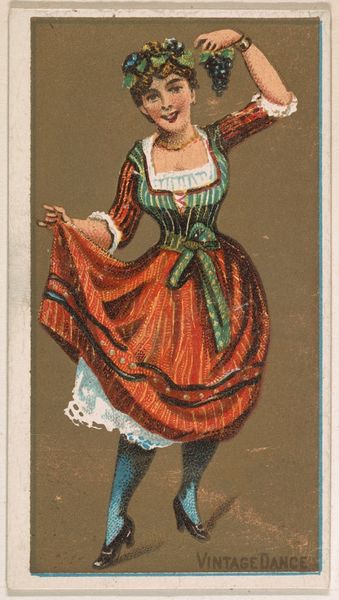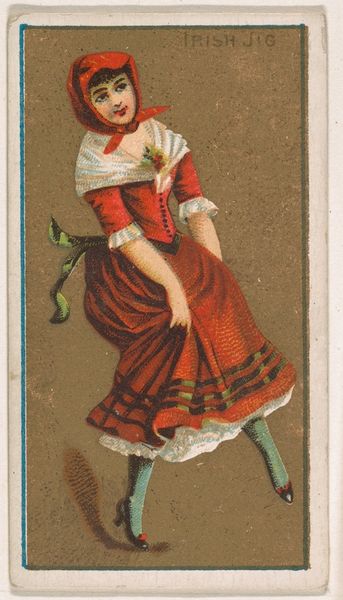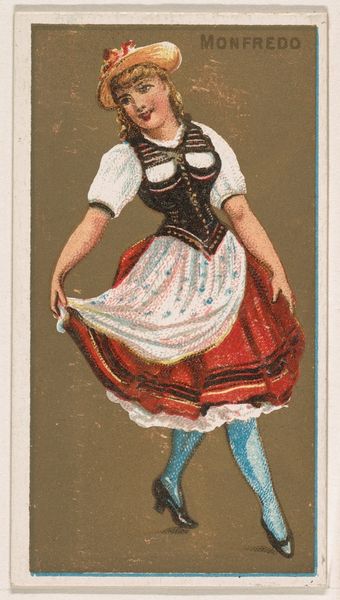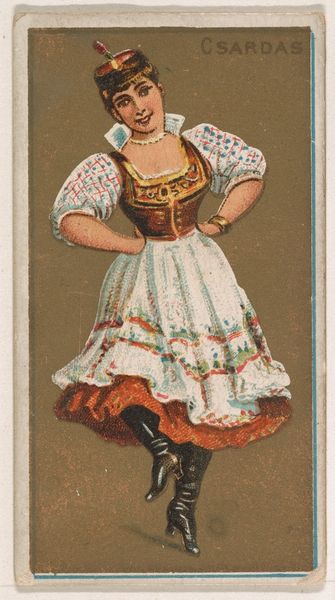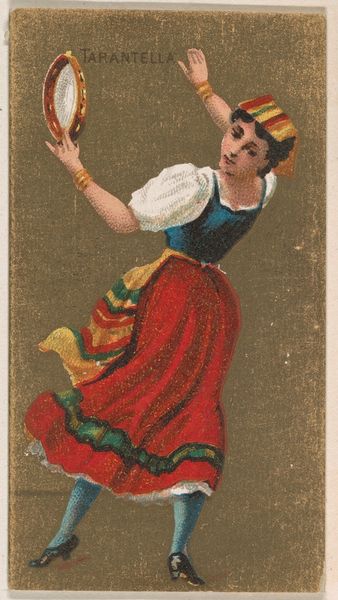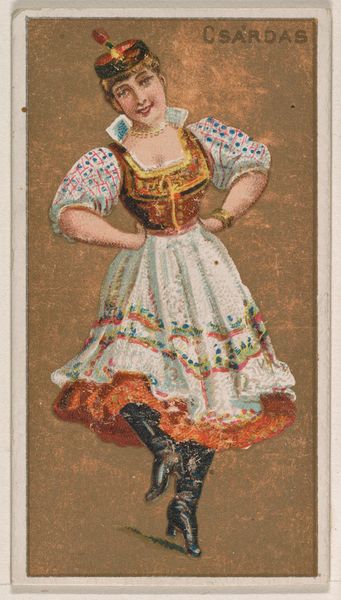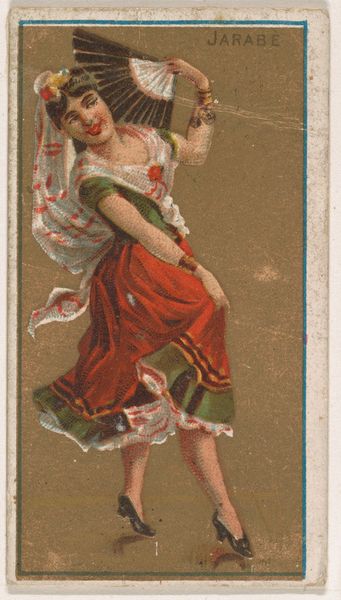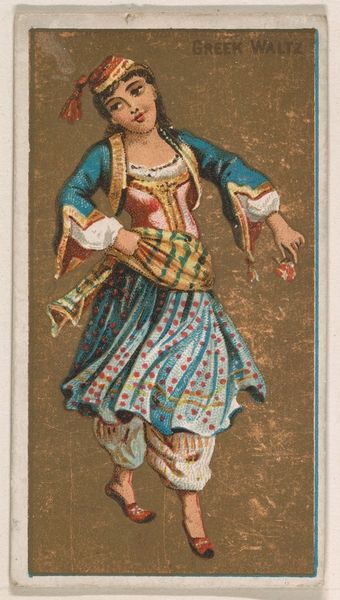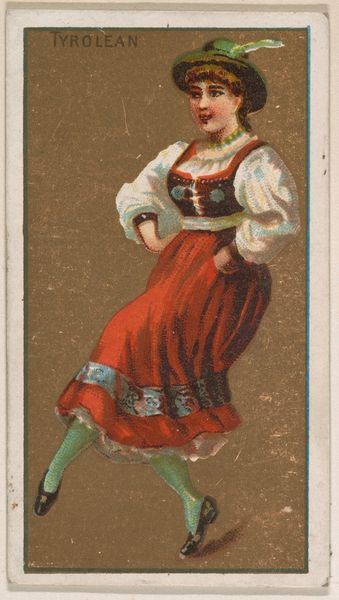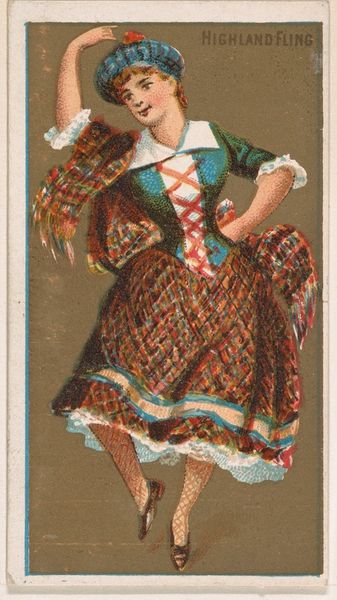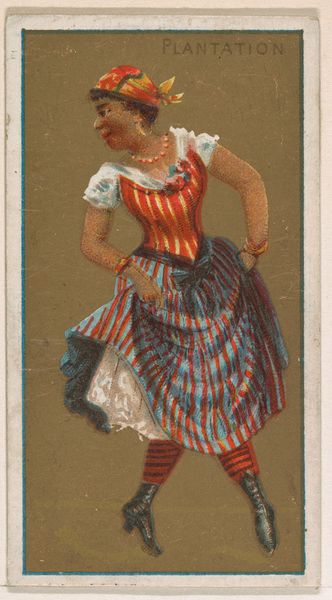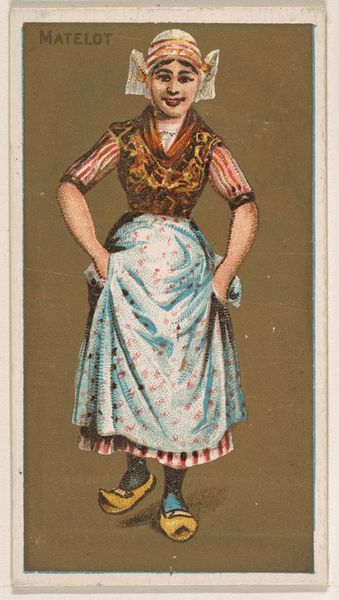
Vintage Dance, from National Dances (N225, Type 1) issued by Kinney Bros. 1889
0:00
0:00
drawing, coloured-pencil, print
#
portrait
#
drawing
#
coloured-pencil
# print
#
caricature
#
caricature
#
figuration
#
coloured pencil
#
genre-painting
#
decorative-art
Dimensions: Sheet: 2 3/4 × 1 1/2 in. (7 × 3.8 cm)
Copyright: Public Domain
Curator: Let's talk about "Vintage Dance," an 1889 colored-pencil print, part of a series titled National Dances, produced by Kinney Brothers Tobacco Company. Editor: My first impression is that it's rather charming, if a little rough around the edges. The palette is quite vibrant, and there's a real sense of movement despite it being a static image. Curator: It's fascinating how these small, mass-produced items functioned. Tobacco companies often included these cards as a bonus, a way to attract consumers and provide them with a glimpse of culture and entertainment, even if highly stylized or stereotypical. This specific artwork showcases a generalized idea of a "vintage" or perhaps even a folkloric dance. Editor: The color choices stand out—the vivid reds and greens against that somewhat mottled, aged background give the figure a slightly flattened appearance, but they work harmoniously. The light seems even, perhaps attempting an ideal representation rather than a study of volume and shadow. And I find interesting that her hose and shoes, although dark, don't suggest dirt or age, maintaining a romantic ideal. Curator: Exactly. These cards were about creating an aspirational lifestyle, a curated image of the world. So, in what ways might it also portray, subtly or not, contemporary ideals? Is the dancer’s demure gaze also constructing norms for female behavior, even in what is portrayed as folkloric dance? Editor: The dress certainly seems assembled from cultural shorthands: the bodice and skirt, the ribbon around the waist, all seem meant to signal “folklore” or a specific cultural “vintage,” while simultaneously displaying the figure. Yet, it might also show the artistic and printing capabilities available during the late 19th century, which sought ways to deliver idealized scenarios and characters within affordable formats. Curator: Precisely! And understanding that blend of consumerism, idealized representation, and social messaging helps us understand how these images functioned within the broader culture of the time. Editor: Considering the stylistic composition alongside that contextual lens has offered a new outlook for me. Thanks! Curator: A mutual learning experience, indeed! It shows the layers beneath this piece are quite interesting.
Comments
No comments
Be the first to comment and join the conversation on the ultimate creative platform.
